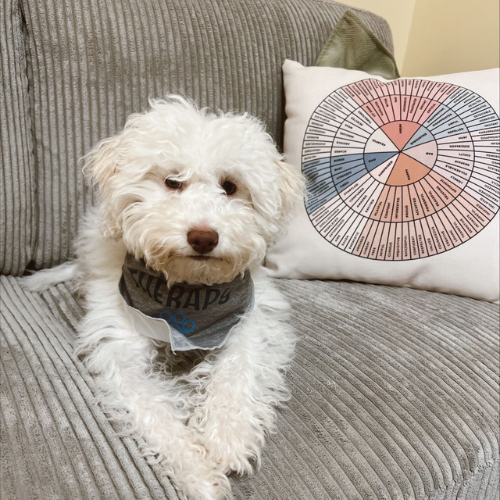Food can be one of life’s greatest comforts. Sharing a meal, enjoying a favorite treat, or celebrating with food is a normal, joyful part of being human. But sometimes, eating can shift from comfort to compulsion—becoming a way to cope with stress, numb painful emotions, or fill an emptiness inside. This pattern, known as compulsive eating, can be deeply distressing and, for many, can lead to a more serious eating disorder.
Understanding compulsive eating with compassion, not judgment, is vital. It’s not about lack of willpower—it’s about how our minds, emotions, and bodies interact when life feels overwhelming.
What Is Compulsive Eating?
Compulsive eating involves repeatedly eating large amounts of food, often quickly, and feeling unable to stop, even when full. Unlike simply enjoying extra helpings at a holiday meal, compulsive eating feels driven by an inner urgency. People often describe feeling “out of control” around food.
Unlike binge eating disorder (BED)—a diagnosable mental health condition—compulsive eating doesn’t always meet specific diagnostic criteria, but it shares many of the same features. In fact, research shows that frequent compulsive eating episodes are one of the strongest predictors for developing BED over time.
Why Does Compulsive Eating Happen?
Many factors can contribute to compulsive eating. Research published in journals like Appetite and the International Journal of Eating Disorders points to a mix of emotional, psychological, and biological causes:
Emotional regulation: Food can become a way to cope with sadness, boredom, anxiety, or loneliness. It offers temporary comfort, but the relief is short-lived.
Dieting and restriction: Ironically, strict dieting or skipping meals can fuel compulsive eating. When the body is deprived, cravings intensify, making it harder to stop once you start.
Stress: High stress levels are linked to compulsive eating. Stress hormones like cortisol can increase cravings for high-fat, high-sugar foods.
Reward pathways: Research shows that certain foods trigger the brain’s reward system, releasing dopamine and creating a sense of pleasure—sometimes leading to repeated eating for that reward.
When Compulsive Eating Becomes Disordered Eating
Many people who struggle with compulsive eating feel deeply ashamed. They might promise themselves they’ll “do better” tomorrow, only to feel stuck in the same cycle. Over time, this pattern can lead to more severe disordered eating behaviors, including binge eating disorder.
BED is now recognized in the Diagnostic and Statistical Manual of Mental Disorders (DSM-5) as a distinct eating disorder. People with BED experience frequent binge episodes, marked distress, and loss of control, but without regular purging behaviors seen in bulimia nervosa.
Studies in the Journal of Psychiatric Research and Obesity Reviews show that people with BED are more likely to experience depression, anxiety, and low self-esteem. Compulsive eating doesn’t always progress to BED—but if left unaddressed, the emotional distress and health consequences can grow.
The emotional toll of compulsive eating
One of the hardest parts of compulsive eating is the shame and secrecy that often surrounds it. Many people hide their eating behaviors from friends and family, blaming themselves for “failing” or lacking willpower. This isolation makes it even harder to reach out for help.
But here’s the truth: compulsive eating is not a personal failing. It’s a sign that someone is using food to cope with emotions that feel too big to handle alone. And like all forms of disordered eating, it deserves understanding, not judgment.
How to Recognize the Signs
Some common signs that compulsive eating may be turning into disordered eating include:
Eating large amounts of food when not physically hungry.
Eating very quickly and feeling unable to stop.
Feeling uncomfortably full but continuing to eat.
Feeling ashamed, disgusted, or deeply guilty after eating.
Eating alone or in secret to hide the behavior.
Obsessively thinking about food and planning eating episodes.
If these patterns sound familiar, you are not alone—and help is available.
Getting Support and Breaking the Cycle
Addressing compulsive eating takes courage, but it is possible. Many people benefit from a compassionate, science-backed approach that tackles the emotional, physical, and mental aspects of the behavior.
Evidence-based therapy: Cognitive Behavioral Therapy (CBT) is one of the most effective treatments for compulsive eating and binge eating disorder. It helps people recognize triggers, develop healthier coping skills, and reduce shame.
Mindful eating: Learning to tune in to hunger and fullness cues can help break automatic eating patterns. Mindfulness-based approaches teach people to eat with awareness rather than judgment.
Addressing restriction: Letting go of extreme dieting and building a balanced, flexible relationship with food is essential to reduce binge urges.
Community and support: Many find comfort and accountability in support groups, whether in-person or online. Sharing your experience can ease feelings of isolation.
Professional treatment: Registered dietitians, eating disorder therapists, and primary care doctors can work together to help you create a plan that supports your physical and emotional health.
Sources
Gearhardt, A. N., et al. Obesity and compulsive eating. Obes. Rev., 12(5).
Hudson, J. I., et al. The prevalence of binge eating disorder. Biol. Psychiatry, 57(3).
Dingemans, A., et al. Emotional regulation in binge eating disorder. Int. J. Eat. Disord., 39(2).
Goldschmidt, A. B., et al. Binge eating and stress. Appetite, 56(2).
Grilo, C. M., et al. Psychiatric comorbidity of binge eating disorder. J. Psychiatr. Res., 46(4).
Magnolia Creek is dually licensed to treat eating disorders and a multitude of co-occurring disorders. We tailor our treatment plans to individual needs and goals while empowering every client in our care to embrace recovery with resilience and independence.














































